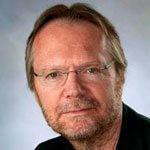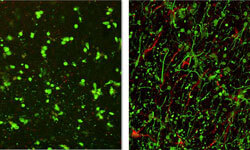SAN ANTONIO (Jan. 13, 2014) – With the arrival of Zachary Child, M.D., the Health Science Center is now one of only five locations in the United States with an orthopaedic surgeon who is trained in complex spinal and musculoskeletal oncology.
The other civilian locations with a similarly trained spine surgeon are the UT MD Anderson Cancer Center in Houston, the Mayo Clinic in Minnesota, Massachusetts General Hospital (the largest teaching hospital of Harvard Medical School) in Massachusetts, and the Carolinas Medical Center in North Carolina.
Robert Quinn, M.D., professor and chair of the Department of Orthopaedic Surgery at the UT Health Science Center San Antonio, said for the first time the university can offer an orthopaedic spine service.
“His expertise allows us to treat the most challenging conditions in the field of orthopaedics: tumors of the spine,” Dr. Quinn said. “Dr. Child is one of few surgeons in South Texas with the training to tackle everything from childhood cancer to artificial disk replacement. With his training, demeanor and superb bedside manner, he is the perfect individual to build a center of excellence in orthopaedic spine surgery here at the UT Health Science Center.”
The California native began his career as a firefighter before becoming a paramedic and paramedic instructor. His interest in medicine led him to earn his medical degree at the University of Nevada School of Medicine. He went on to complete his residency in orthopaedic surgery at the University of New Mexico School of Medicine.
In 2012, Dr. Child completed a clinical fellowship in orthopaedic oncology from the Harvard Medical School/Massachusetts General Hospital. In 2013, he completed a clinical fellowship in orthopaedic spine surgery from the University of Washington School of Medicine at Harborview Medical Center in Seattle.
Dr. Child said this is an exciting time for spine surgery. “We are doing surgeries now – especially those involving cancer that starts in the spine – that 20 years ago no one would have even attempted. New technology and new techniques now are allowing us to treat these tumors like you would ones anywhere else in the body. Our goal is to remove 100 percent of the tumor. By doing that, we give our patients their best chance at disease-free survival,” he said.
Dr. Child, an assistant professor of orthopaedic surgery at the university, calls working in orthopaedic oncology a real privilege.
“Taking care of cancer patients offers a completely different level of satisfaction. Even with cancer patients who cannot be cured, surgery can take away their pain and give them incredible quality of life for the rest of their time. You can make their lives better,” he said.
Dr. Child said orthopaedic oncology is truly a team-based collaboration.
“You cannot do these surgeries on your own. When we have a new patient to discuss, a team of eight will usually sit down to discuss the surgery and what each of us will do,” he said. “Together we will decide how to best treat the patient. I am very fortunate to be able to work with an incredibly talented team of orthopaedists and other specialists from throughout the university.”
Each year in the United States, there are approximately 2,000 primary bone cancers, which are those that start in the bone. Of all bone tumors, 6 percent affect the spine.
In addition to being able to treat orthopaedic oncology, this medical team also can provide care to individuals who are suffering from traumatic injuries, degenerative diseases and complex spinal deformities.
To make an appointment with UT Medicine – Orthopaedics, please call 210-450-9300. UT Medicine is the clinical practice of the School of Medicine at the UT Health Science Center. UT Medicine – Orthopaedics is located in the Medical Arts & Research Center (MARC) at 8300 Floyd Curl Drive in the Medical Center.
UT Medicine San Antonio is the clinical practice of the School of Medicine at the UT Health Science Center San Antonio. With more than 700 doctors – all School of Medicine faculty – UT Medicine is the largest medical practice in Central and South Texas. Expertise is in more than 100 medical specialties and subspecialties. Primary care doctors and specialists see patients in private practice at UT Medicine’s flagship clinical home, the Medical Arts & Research Center (MARC), located at 8300 Floyd Curl Drive, San Antonio 78229. Most major health plans are accepted, and UT Medicine physicians also practice at several local and regional hospitals. Call (210) 450-9000 to schedule an appointment, or visit www.UTMedicine.org for a list of clinics and phone numbers.



